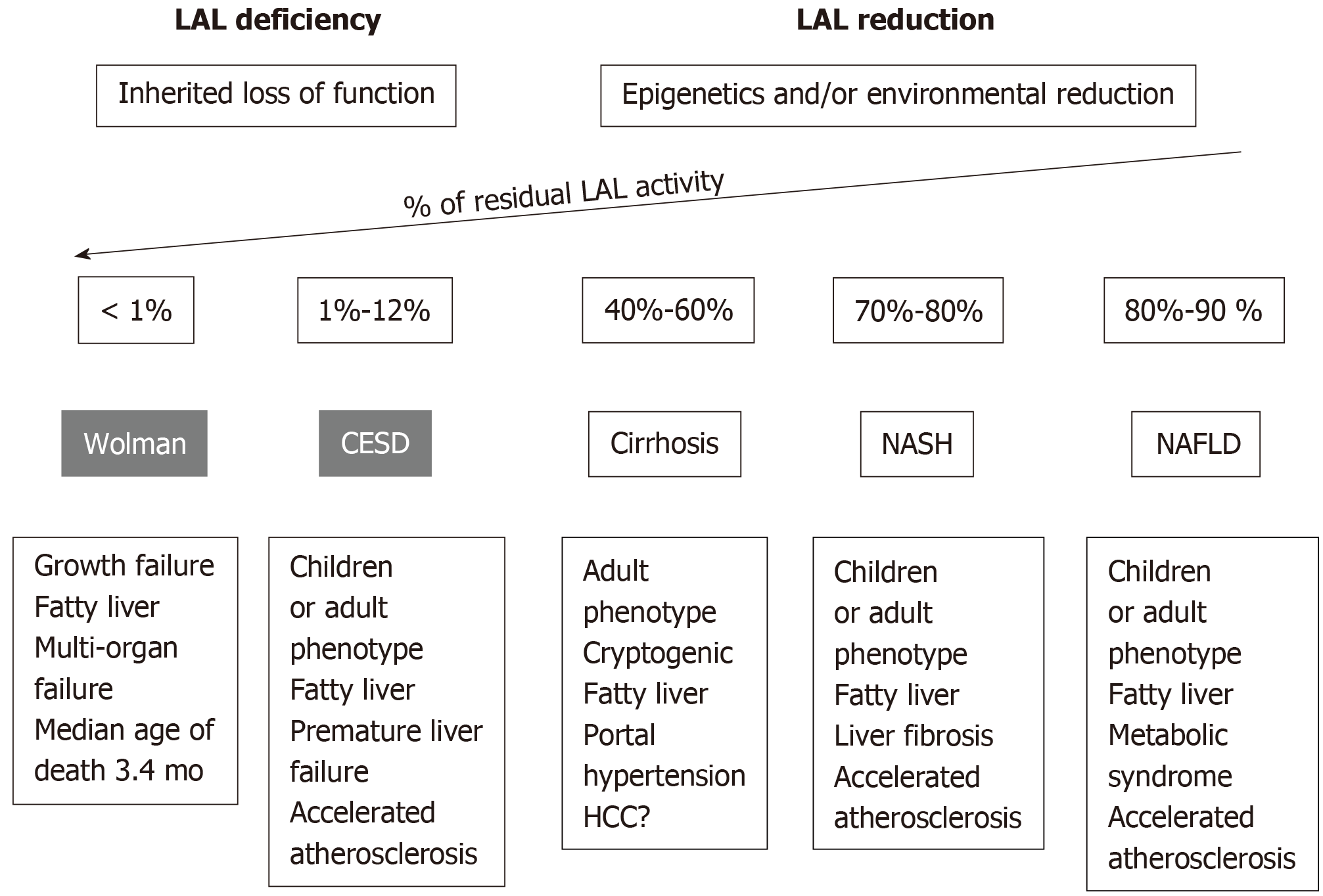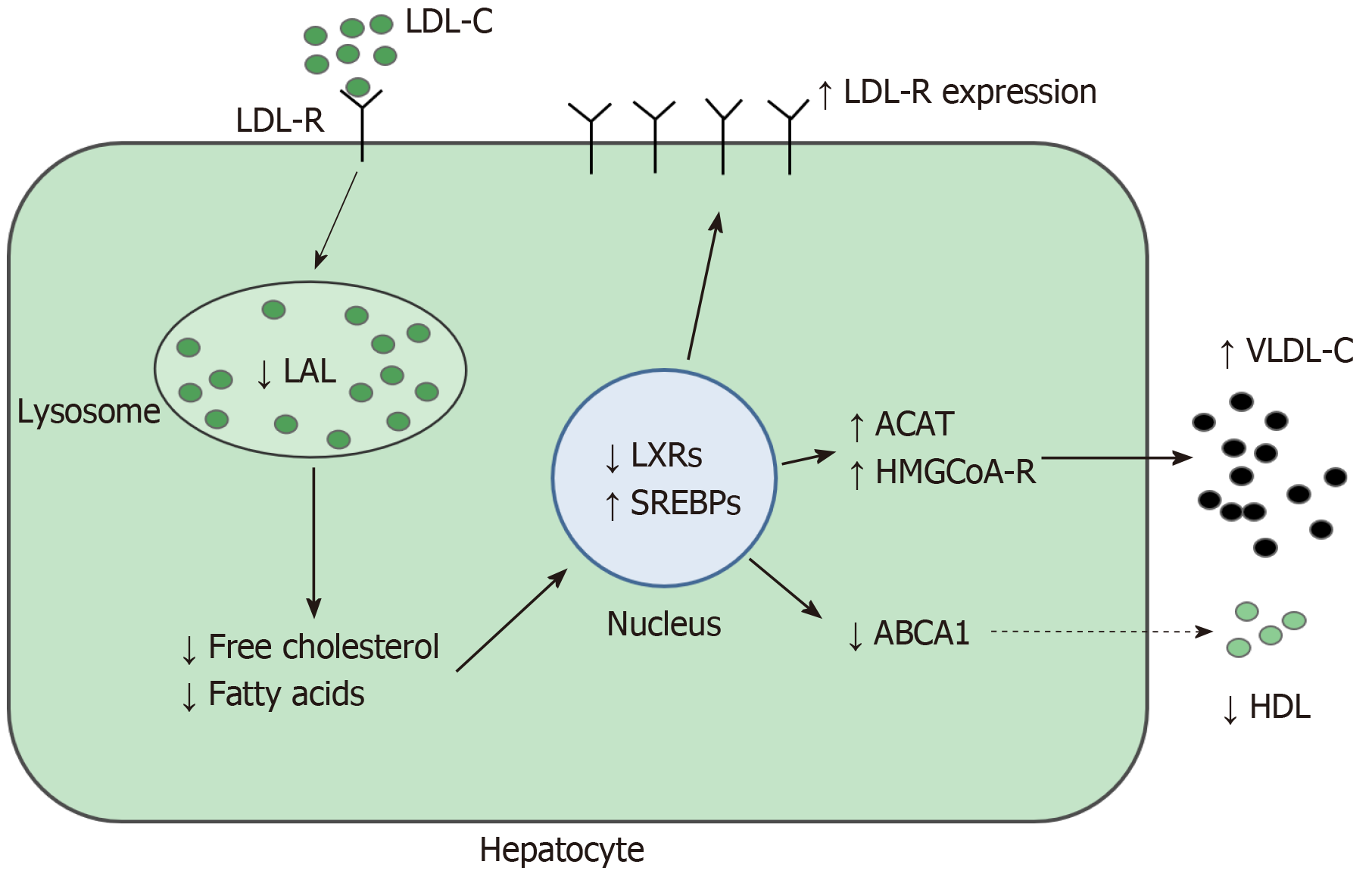Copyright
©The Author(s) 2019.
World J Gastroenterol. Aug 14, 2019; 25(30): 4172-4180
Published online Aug 14, 2019. doi: 10.3748/wjg.v25.i30.4172
Published online Aug 14, 2019. doi: 10.3748/wjg.v25.i30.4172
Figure 1 LAL activity reduction in the spectrum of NAFLD.
LAL: Lysosomal acid lipase; NAFLD: Non-alcoholic fatty liver disease; NASH: Non-alcoholic steatohepatitis; CESD: Cholesterol esters storage disease.
Figure 2 Changes of hepatic lipid metabolism in lysosomal acid lipase deficiency.
Reduced lysosomal acid lipase activity causes lysosomal lipid accumulation and reduction of free fatty acids and cholesterol in cytosol. This reduction influences numerous gene transcriptions via transcription factors such as liver X receptors and steroid regulation binding proteins, resulting in higher expression of low-density lipoprotein receptor, acetyl-coenzyme A acetyltransferase, and 3-idrossi-3-metilglutaril-coenzima A reductase and in a lower expression of ATP-binding cassette A1. These changes result in amplified lysosomal lipid accumulation, increased serum very low-density lipoproteins, and decreased serum high-density lipoprotein. LAL: Lysosomal acid lipase; ACAT: Acetyl-coenzyme A acetyltransferase; HMGCoA: 3-Idrossi-3-metilglutaril-coenzima A; LXRs: Liver X receptors; SREBPs: Steroid regulation binding proteins; ABCA1: ATP-binding cassette A1; LDL: Low-density lipoprotein; VLDL: Very low-density lipoproteins; HDL: High-density lipoprotein; LDL-r: Low-density lipoprotein receptor.
- Citation: Baratta F, Pastori D, Ferro D, Carluccio G, Tozzi G, Angelico F, Violi F, Del Ben M. Reduced lysosomal acid lipase activity: A new marker of liver disease severity across the clinical continuum of non-alcoholic fatty liver disease? World J Gastroenterol 2019; 25(30): 4172-4180
- URL: https://www.wjgnet.com/1007-9327/full/v25/i30/4172.htm
- DOI: https://dx.doi.org/10.3748/wjg.v25.i30.4172










